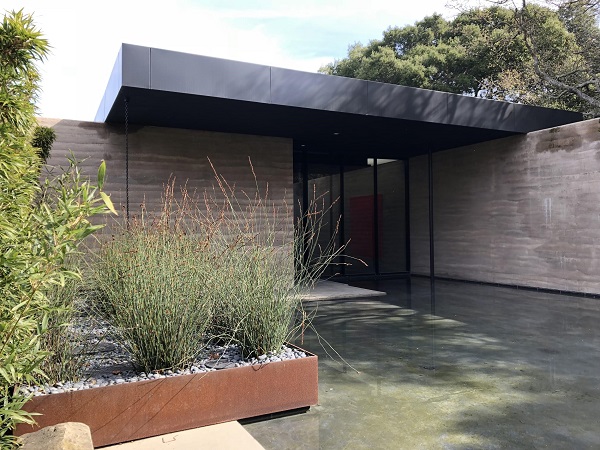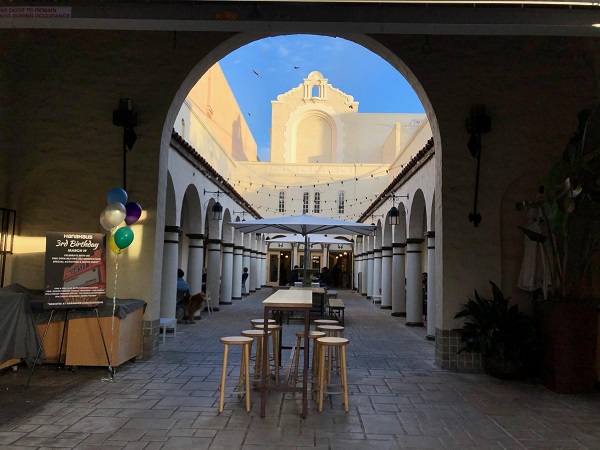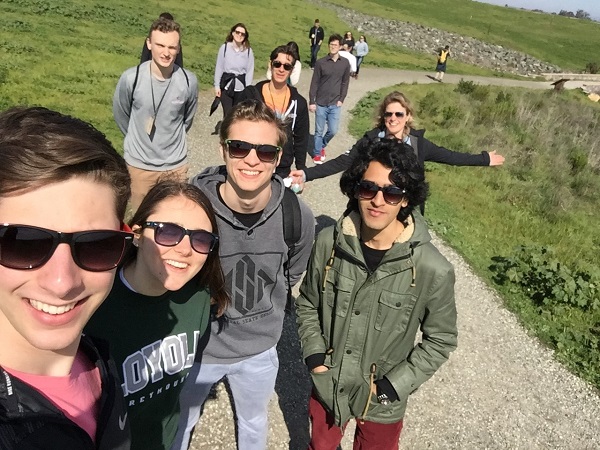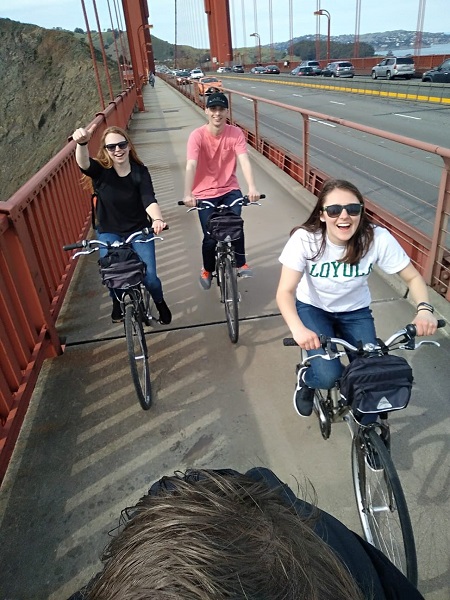UIF Silicon Valley Meetup 2018 Recap
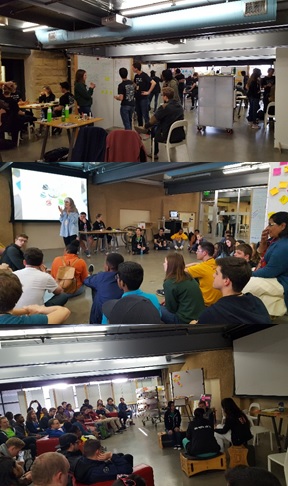
The University Innovation Fellows (UIFs) program is a program run through d.school at Stanford. The UIF website states that “We believe students can change the world.” Their goal is to empower students to become leaders of change in higher education. Fellows are creating a global movement to ensure that all students gain the necessary attitudes, skills and knowledge to compete in the economy of the future. Loyola University joined this program in 2017 and the second cohort of Loyola UIFs attended the UIF Silicon Valley Meetup during March 15-19. I enjoyed being part of this meetup as a UIF faculty mentor or champion for the second cohort of Loyola UIFs. This meetup was engaging, and no one was complaining about the minimum of 14 hours per day of activities from 7:30 am to 9:30 pm, some of which are described below by our UIFs. As faculty, I enjoyed ideas and demos related to engaging learning spaces, flexible classrooms and furniture, and engaging activities that can empower faculty to become the “guide on the side” and design courses and learning activities that are creative and collaborative, while using problem solving approaches that are not limited to a specific discipline and leveraging design thinking to tackle different problems from social to environmental to technical and everything in between.
The picture shows three different configurations of Studio 1 or Stanford’s d.school. We were able to transition from one configuration to the other in just a couple of minutes. The d.school is part of mechanical engineering at Stanford, and this is created by turning the old garage into an engaging learning space that serves all disciplines and has great emphasis on interdisciplinary work. At d.school offices and spaces are not assigned to faculty or staff, but are assigned to projects for the duration of each project. Faculty interested in teaching a course through d.school form an interdisciplinary team and participate in a 60 second pitch to attract interested students to sign up for their classes.
So, how might we create enough flexible spaces at Loyola to enhance engaged, collaborative, and interdisciplinary teaching and learning activities in our campus?
~Bahram Roughani – Associate Dean for the Natural and Applied Sciences
Below is a recap by the Loyola UIFs based on their Silicon Valley Meetup experience.
Thursday
After setting our alarms for 3:00 am and making our way to BWI airport, we made it to the plane and began our 6-hour journey to California. Once we landed, we settled into our hotel and bee-lined it to the nearest In n’ Out Burger. Then we ventured out into Palo Alto and explored Apple's new campus, Apple Park, spending time at the visitor’s center and the outlook area upstairs. Afterwards, we ventured to Stanford and explored the Hasso Plattner Institute of Design (Stanford's d.school), where we would be spending most of our time over the next few days.
We began our official UIF events Thursday evening, and had the opportunity to eat dinner and network with all of the fellows. Over the course of the evening, we met fellows from around the world, from countries as far as Australia, India, Switzerland, Peru, Uruguay, and China.
After getting acquainted with our fellow fellows (no pun intended), we could already see how the University Innovation Fellows program truly has a global network and impact.
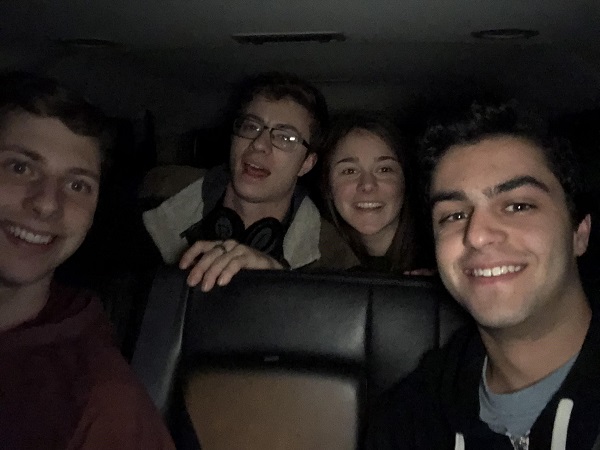
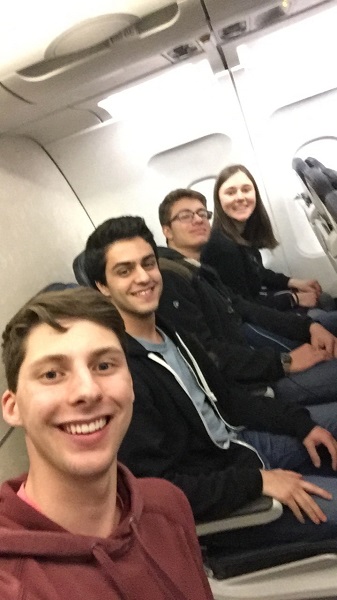
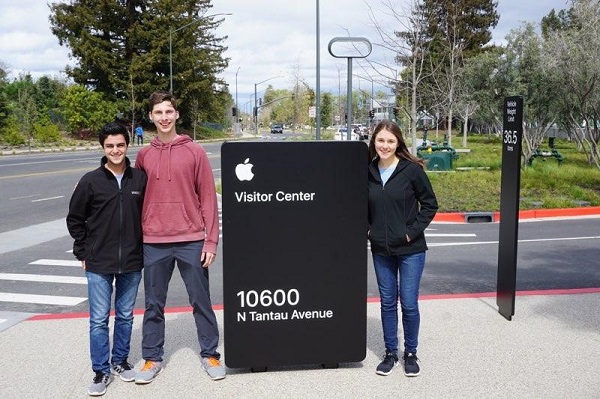
Friday
Friday’s sessions were held at Google Headquarters in Mountain View, where we learned how to work together to create a culture of innovation to support others and try to solve “moonshots,” large game changing ideas that will change the world. Presentations on these topics were led by Frederik Pferdt, Google’s Chief Innovation Evangelist; Viola Gauci, Program Lead of Google X; and Dan Stratford, Program Manager of Google Education.
Google is famous for thinking with a “10X” mindset. We learned that innovators at Google work to create a 10 times improvement instead of a 10 percent improvement in their projects. They elaborated by teaching us how they go about creating a product, with initial brainstorming, focus sessions, flare up stages for moonshot ideas, and then fast prototyping that helps inspire design of their final products.
We learned a “Yes, and” and “What if” mindset that encourages positive reactions to new ideas instead of negative responses such as “Yes, but”.
What if we start getting students to think about Moonshots for our own campus?
Saturday
On Saturday, our sessions moved to the Stanford d.school (Design School). Between sessions on design thinking and working with empathy in mind, we attended special workshops that encouraged positive interactions with others and how we can learn to love ourselves.
These workshops included learning “stokes” - activities using improvisation that allowed us to get to know each other better as people and collaborators. We also participated in a dance workshop that taught us not only to step outside of our comfort zones, but also to prioritize eye contact and meaningful connections with others as individuals. Afterwards, we participated in an “Inspiration Walk” that allowed us to reflect individually on aspects of our lives and draw inspiration from the world around us.
We finished the day with an “Unconference,” a mini conference in which many small, group conversations are held simultaneously instead of one large lecture. The Unconference allowed us to create our own topics to share with other fellows, such as “Giving meaning to ‘How are you?’”, “Aerospace Engineering”, “How do apps affect your campus?”, and “Social Justice and Technology, Social Media, and Education.”
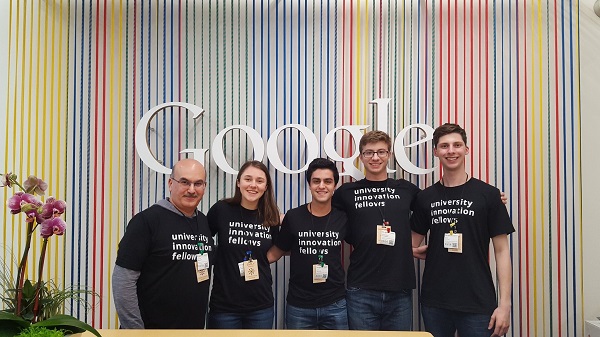
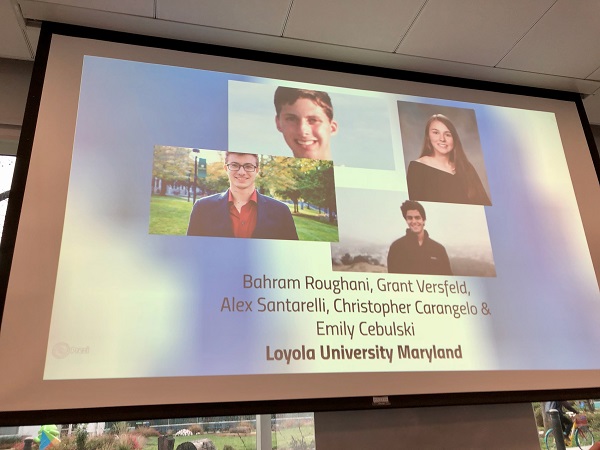
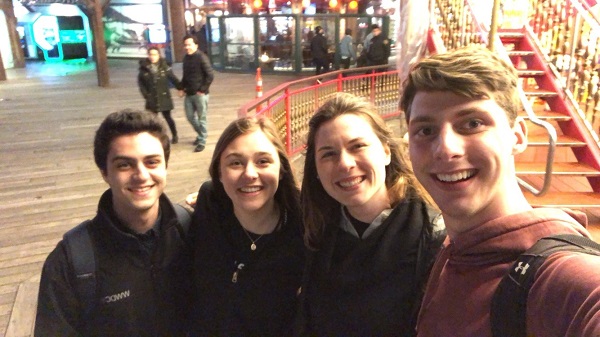
How might we use activities like Stokes, the Unconference, and the Inspiration Walk to better connect with our community here at Loyola?
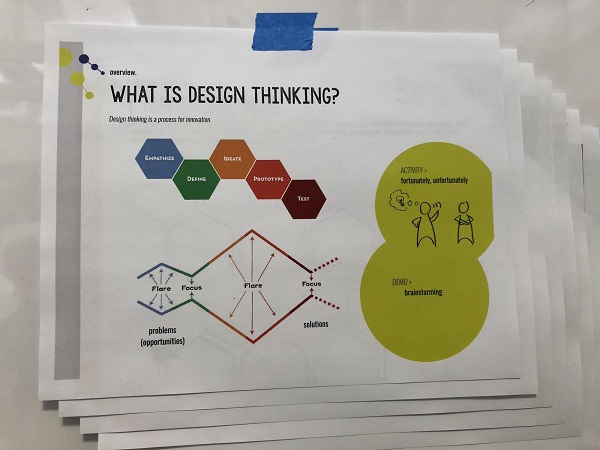
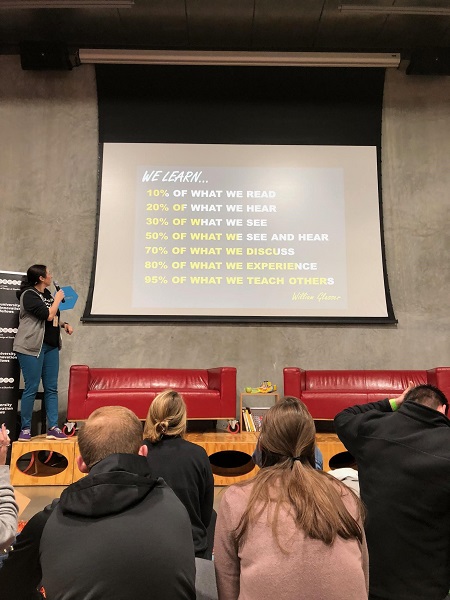
Sunday
Sunday was also at the Stanford campus, but instead of introductions we went in depth into design thinking. Some specific activities included walking through the process of creating a design thinking program - including everything from proposing it to figuring out effective ways to prototype it.
In the first half of the day we were assigned to teams within the d.school’s studios. With those teams we applied the lessons we had learned in the previous days to a problem the group faced in everyday life. We empathized, defined the problem, ideated, prototyped, and tested our idea. In the afternoon we repeated that process with our cohort at Loyola around the projects and problems we identified while going through the online course.
After a long day of work, some of the student advisors (affectionately known as “Fabs”) hosted inspirational “Ignite Talks” about their experiences creating impact on campus. We then had an impromptu dance party while we ate dinner, and everyone celebrated a successful meetup for the UIF family.
How might we use the design thinking skills that we have learned to influence others and effect change on campus?
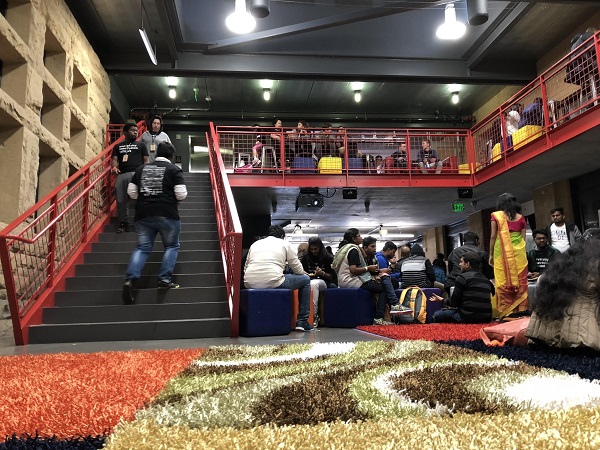
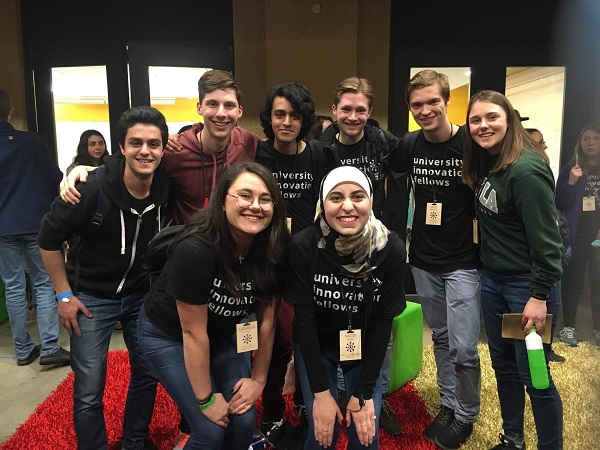
Monday
After a busy weekend of 12-hour workshops, we spent our last morning taking reflective walks that allowed us to process everything that we learned throughout the program. We were given a variety of options to explore and learn more about the bay area, and when deciding which trip to go on, our cohort split. Alex and Chris took an in-depth tour of Stanford, while Emily and Grant traveled to the Baylands Nature Preserve. After the trips ended, each pair went off on their own explorations before meeting back at the airport Monday night.
In the Stanford trip, we stopped at their dedicated meditation center where electronics, and studying are not allowed. This is an area for students to meditate and reflect. With very soft lighting and beautiful artwork on the walls this is a great place to go on campus to de-stress and take a break from the busy life of a college student. After leaving Stanford, Chris and Alex wandered around Palo Alto and worked in a co-working space called HanaHaus that also had a Blue Bottle coffee shop.
In the Baylands trip, Grant and Emily walked around the trails with a small group of fellows and discussed our gratitude for the weekend that we just experienced. Afterwards, we ventured to San Francisco with the Danish UIF Cohort and biked along the Golden Gate Bridge before heading back to the airport and returning home.
How might we inspire students on our campus to embody a more innovative and empathetic mindset?
